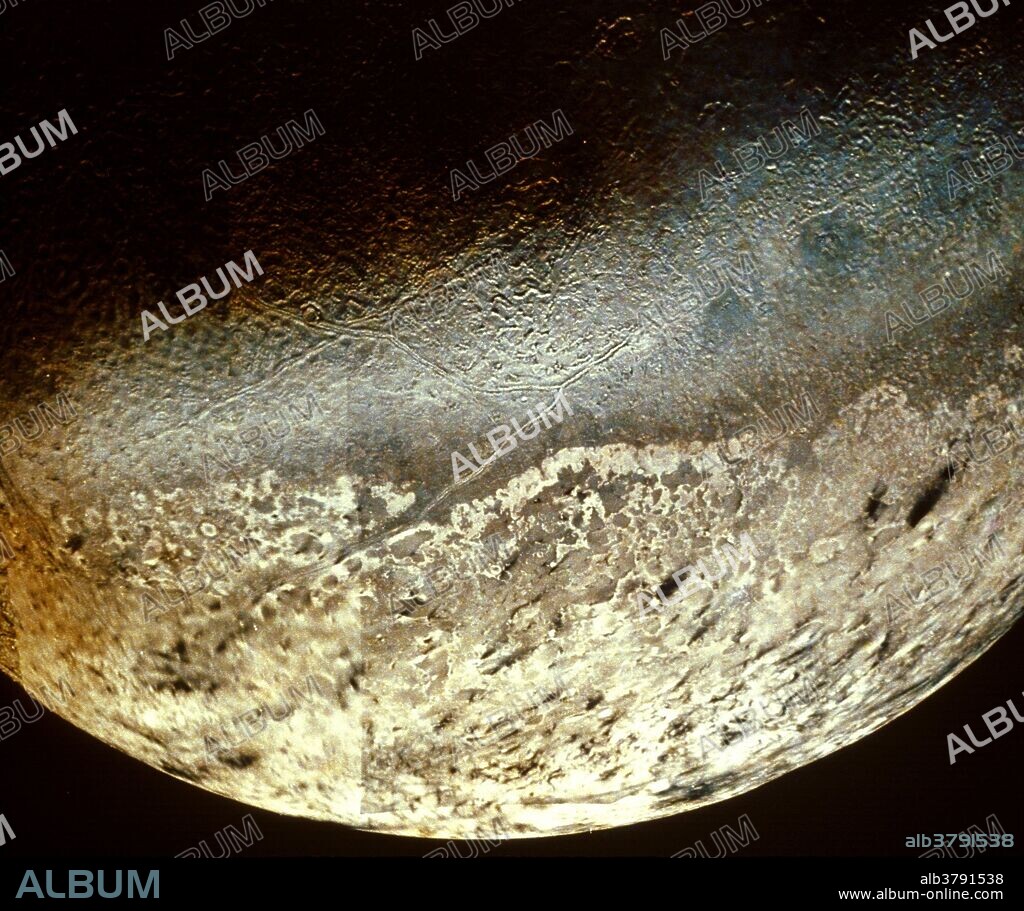alb3791538
Triton, Moon of Neptune, Voyager 2 Image

|
Añadir a otro lightbox |
|
Añadir a otro lightbox |



¿Ya tienes cuenta? Iniciar sesión
¿No tienes cuenta? Regístrate
Compra esta imagen.
Selecciona el uso:

Título:
Triton, Moon of Neptune, Voyager 2 Image
Descripción:
Ver traducción automática
Triton is the largest of Neptune's seven satellites. It was discovered in 1846 weeks after the discovery of Neptune itself by William Lassell. Triton's orbit is retrograde. It is the only large moon in the solar system to orbit backwards. The most interesting feature of this satellite are its ice volcanoes probably composed of nitrogen, dust, or methane compounds from beneath its surface. Triton, Io, Venus, and the Earth are the only solar bodies that exhibit volcanic activity. Almost all that is known about Triton comes from Voyager 2 which encountered the moon on August 25, 1989.
Crédito:
Album / Science Source / NASA/JPL
Autorizaciones:
Modelo: No - Propiedad: No
¿Preguntas relacionadas con los derechos?
¿Preguntas relacionadas con los derechos?
Tamaño imagen:
2989 x 2504 px | 21.4 MB
Tamaño impresión:
25.3 x 21.2 cm | 10.0 x 8.3 in (300 dpi)
Palabras clave:
ASTRONOMIA • CIENCIA • ESPACIAL • ESPACIALES • ESPACIO ULTRATERRESTRE • ESPACIO • LUNA • PLANETA • SATELITE • UNIVERSO
 Pinterest
Pinterest Twitter
Twitter Facebook
Facebook Copiar enlace
Copiar enlace Email
Email
